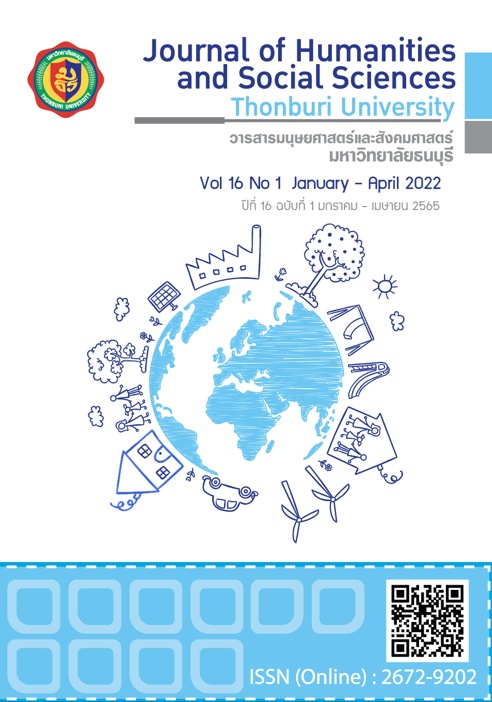The Occupational Health Safety Model in logistics businesses in the Epidemic Crisis
Keywords:
Logistics Business, Freight, Occupational Health, Security Model, Epidemic CrisisAbstract
This research aimed to develop an occupational health safety model of logistics businesses in the epidemic crisis using a multi-period integrative research method. The qualitative research method was conducted first by synthesizing the data of the shipping business standards, i.e., Q-Mark, GDP, GSP, Q-Cold Chain, and ISO22301. Then the in-depth interviews were employed with the executives of the companies who received the mentioned standards in order to synthesize specific variables related to occupational health safety. After that the quantitative method was conducted using the obtained variables to create a questionnaire as a tool to collect data about the occupational health operations of 414 Q-Mark certified transport logistics operators in Thailand. Then the factor analysis was used to confirm the variables. Finally, both the qualitative and quantitative results were employed to develop an occupational health safety model followed by a group discussion to reaffirm the pattern. The results showed that the occupational health safety model of logistics business in the epidemic crisis consisted of 5 areas, which were the management system within the organization, the driver management for cargo delivery, the management of freight vehicles, the management of the routes used for goods transportation, and the response to health safety crises. It was found that the response to health safety crises was of the highest importance, followed by the management system within the organization.
References
Department of Land Transport. (2020). Quality Standard Handbook for Transportation of Agricultural Products and Food Trucks with Temperature Controlled (Q Cold Chain). Retrieved June 1, 2020, from https://www.thaitruckenter.com/tdsc/
Department of Land Transport. (2020). Trucking Service Quality Standards Manual (Q Mark). Retrieved June 1, 2020, from https://www.thaitruckenter.com/tdsc/
EducationHamedi, M., Haghani, A., & Yang, S. (2012). Reliable transportation of humanitarian supplies in disaster response: model and heuristic. Procedia-Social and Behavioral Sciences. 54: 1205-1219.
Hair, J. F., Black, W. C., Babin, B. J., & Anderson. (2010). Multivariate data analysis. 7thed. Upper Saddle River, NJ: Pearson.
Kedkanok Chuemahawan. (2017). Development of quality standard criteria of Thai logistics business, international freight forwarder type. Retrieved June 5, 2020, from http://libdoc.dpu.ac.th/thesis/Geskanok.Chu.pdf.
Lambert, D. M., Cooper, M. C., & Pagh, J. D. (1998). Supply chain management: implementation issues and research opportunities. The International journal of logistics management. 9(2): 1-20.
Management System Certification Institute (MASCI: Thailand). (2020). Industrial product standards Business continuity management system 22301. Retrieved June 1, 2020, from https://www.masci.or.th/
Phuwana Asawakorn Nirangkun. (2019). Adaptation of Thai logistics service providers in the digital age. Retrieved June 6, 2020, from https://www.tci-thaijo.org
Siriporn Lertyingyos. (2014). Roles of the public and private sectors in the development of logistics management system of trucking operators of small and medium enterprises in Thailand. Veridian E- Journal 7(1), January-April 2014: 506-524.
World Health Organization. (2020). Quality Standards for Transportation of Drugs and Medical Supplies Guidelines for Good Storage Practice (GSP). Retrieved June 1, 2020, from https://www.who.int/medicines/areas/ quality_safety/qulity_assurance/GuideGoodStoragePracticesTRS908Annex9.pdf
World Health Organization. (2020). Quality Standards for Transport of Drugs and Medical Supplies Good Distribution Practice (GDP) guidelines. Retrieved June 1, 2020, from https://www.who.int/medicines/areas/quality_ safety/qulity_assurance/GoodDistributionPracticesTRS957Annex5.pdf.
Downloads
Published
How to Cite
Issue
Section
License
Copyright (c) 2021 Chayapol Phupatt

This work is licensed under a Creative Commons Attribution-NonCommercial-NoDerivatives 4.0 International License.
ผลงานที่ปรากฎในวารสารฉบับนี้เป็นลิขสิทธิ์เฉพาะส่วนบุคคลของผู้เขียนซึ่งต้องรับผิดชอบต่อผลทาง กฎหมายที่อาจเกิดขึ้นได้และไม่มีผลต่อกองบรรณาธิการ






